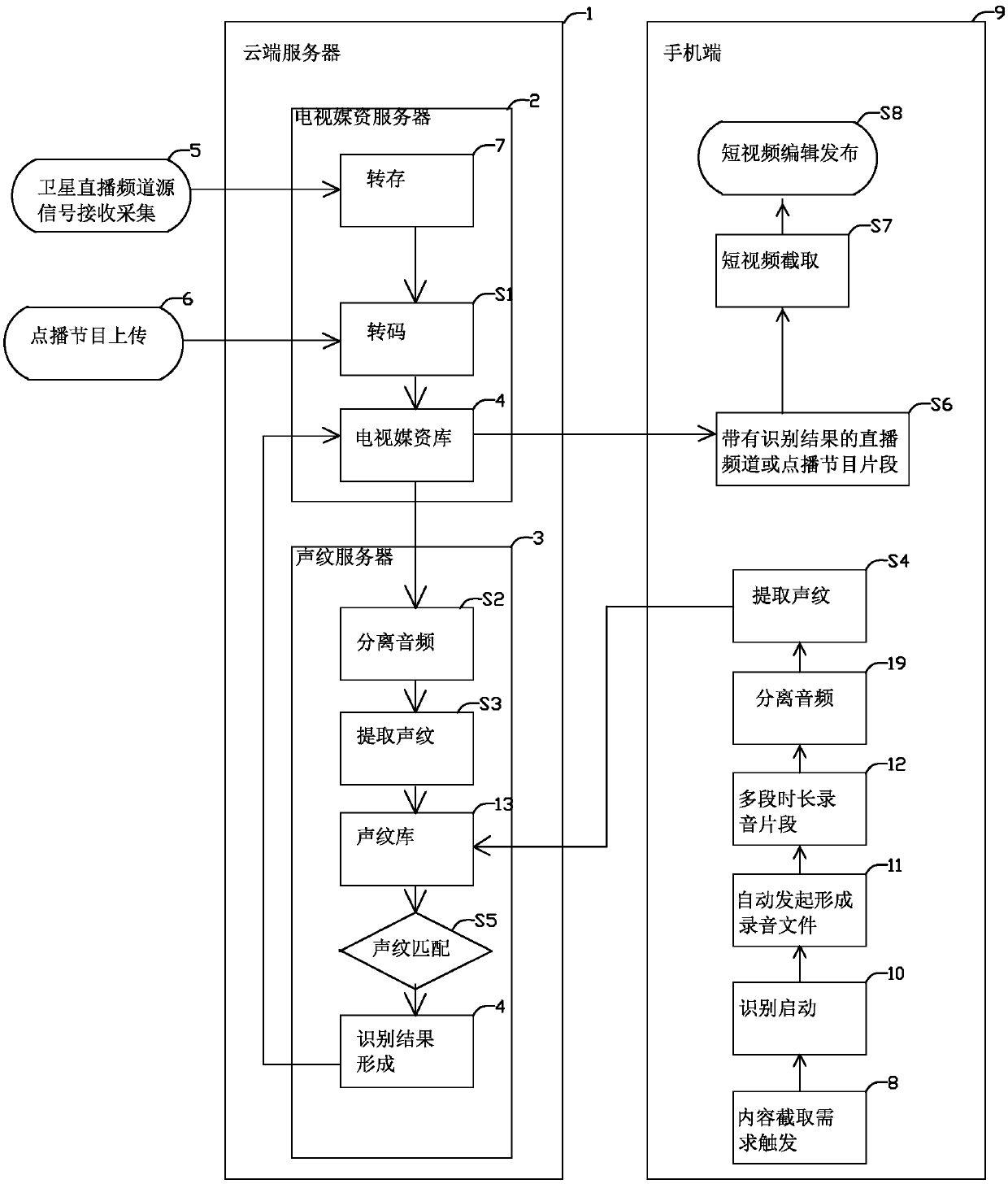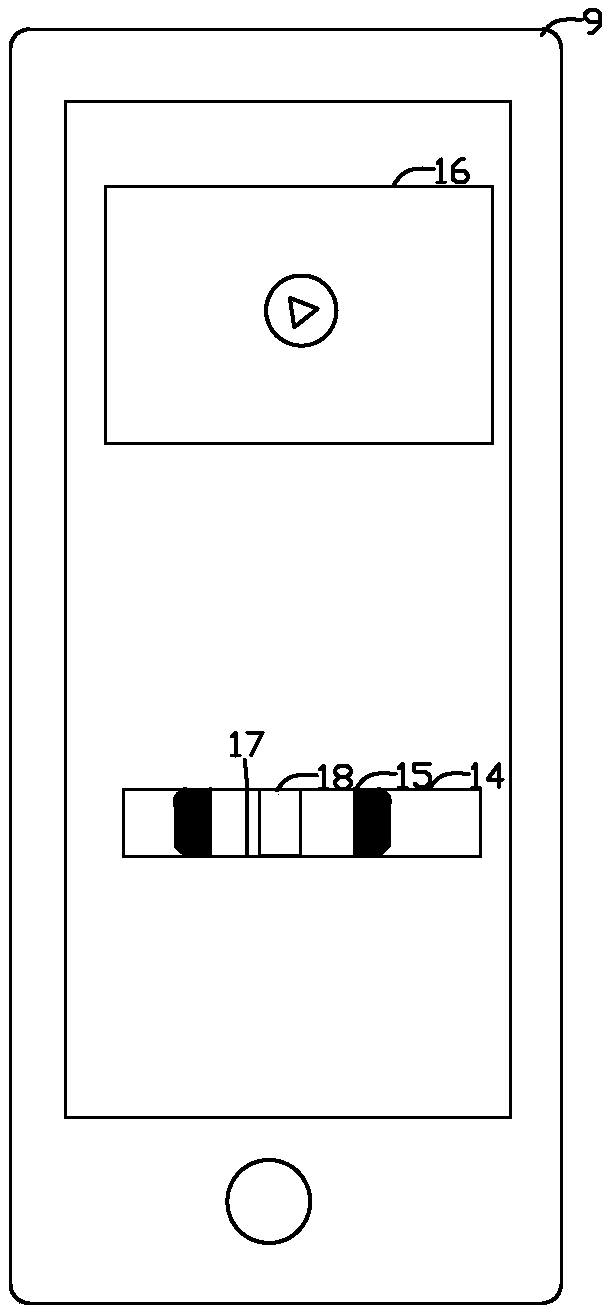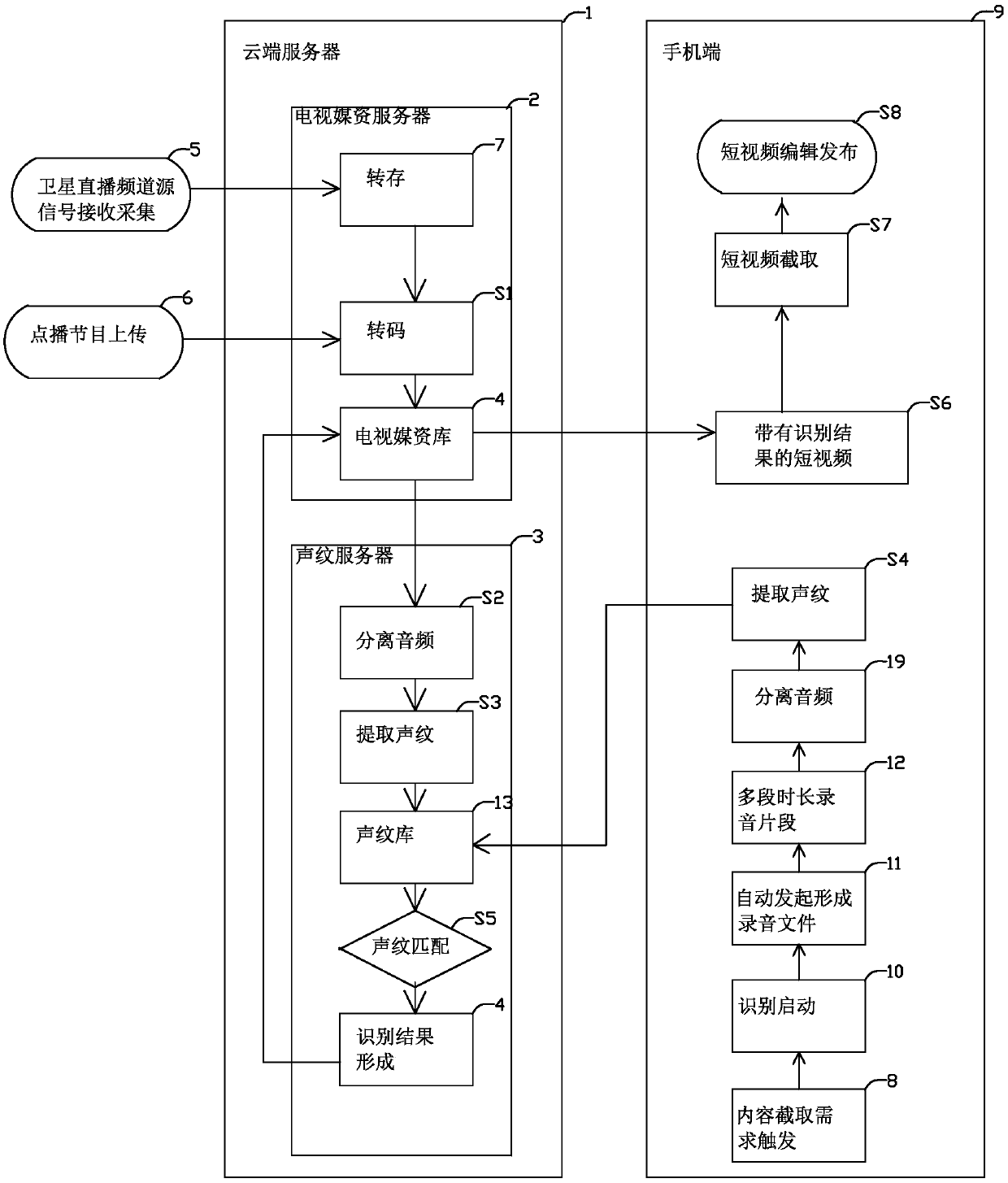Cross-screen television content capturing method based on voiceprint recognition
A voiceprint recognition, TV content technology, applied in selective content distribution, electrical components, image communication, etc., can solve problems such as timely response to user interests and spiritual demands, and achieve the effect of high security
- Summary
- Abstract
- Description
- Claims
- Application Information
AI Technical Summary
Problems solved by technology
Method used
Image
Examples
Embodiment 1
[0028] Embodiment 1 of the present invention provides a method for capturing TV content across screens based on voiceprint recognition. figure 1 As shown, the method includes the following steps:
[0029] S1: Steps of transcoding and storing into the library Cloud server with voiceprint SDK installed 1 Monitoring channel source satellite live channel source signal reception and collection 5 (live) or on-demand program upload 6 (on-demand)
[0030] The audio and video streams of the cloud server 1 TV media server 2 and voiceprint server 3 are stored in 7, and transcoded (converted to a stream that can be recognized by the network TV server and can be transmitted on the Internet) to form TV media data Library 4, to obtain transcoded audio and video streams into the library; the channel source includes audio and video streams from IPTV, digital TV or analog TV, the audio and video streams can also be transcoded (for example, the wireless signal from the satellite is converted into IPT...
Embodiment 2
[0042] Embodiment 2 is a method for capturing TV content across screens based on voiceprint recognition provided on the basis of Embodiment 1. The multiple-length recording segments include m-length recording segments of T duration, and the m-th segment is greater than the m-th segment. Duration of 1 recording segment, T m > T m-1 . When m=3, T1 is 3s, T2 is 5s, and T3 is 15s.
Embodiment 3
[0044] Embodiment 3 is a method for capturing TV content across screens based on voiceprint recognition provided on the basis of Embodiment 2, and the matching is sequential matching of m recording segments. That is, m1, m2, and m3 are matched in sequence until the match is successful. If it is still matched, it is necessary to obtain multiple time-length recording clips again for matching.
PUM
 Login to View More
Login to View More Abstract
Description
Claims
Application Information
 Login to View More
Login to View More - R&D
- Intellectual Property
- Life Sciences
- Materials
- Tech Scout
- Unparalleled Data Quality
- Higher Quality Content
- 60% Fewer Hallucinations
Browse by: Latest US Patents, China's latest patents, Technical Efficacy Thesaurus, Application Domain, Technology Topic, Popular Technical Reports.
© 2025 PatSnap. All rights reserved.Legal|Privacy policy|Modern Slavery Act Transparency Statement|Sitemap|About US| Contact US: help@patsnap.com



